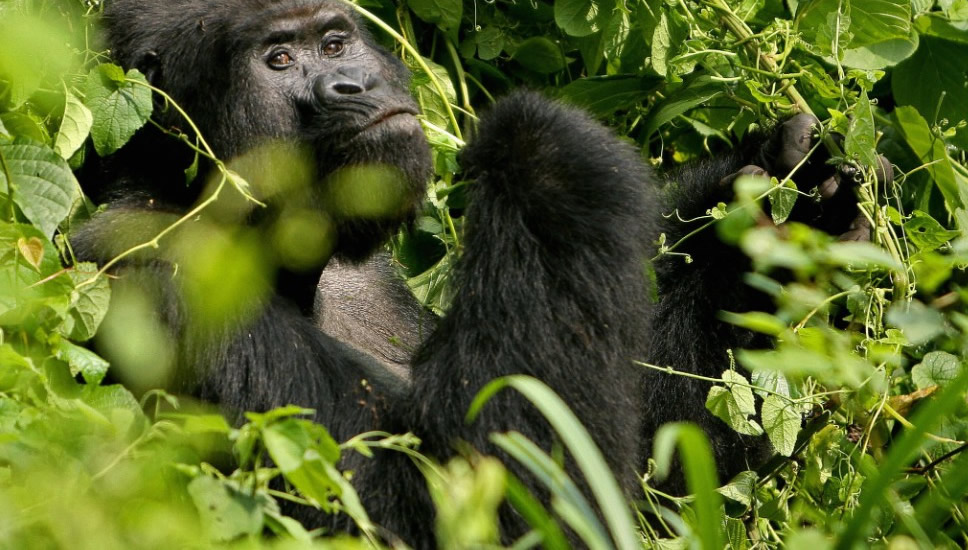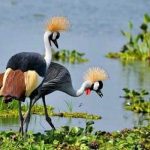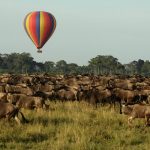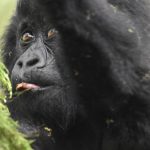Mountain Gorilla Families in Volcanoes National Park

Volcanoes National Park in Rwanda today has a number of 12 habituated gorilla groups for visitors to see and one set aside for research from which the Kwita Izina baby gorilla naming ceremony are selected.
Gorillas groups were named according to their character before the adoption of the annual national gorilla naming ceremony.
A number of 80 gorilla permits are available each day for tourists going to watch gorillas every single day. Below are the gorilla groups available in that you can visit on your gorilla safaris in Volcanoes National Park:
- Susa gorilla group; It derives its name from the Susa River which flows through their home range. Susa gorilla group is one of the most popular families with previously 42 members before the group split up. It is well-known for being the group studied by Diana Fossey during her time in Volcanoes National Park from 1967-1985. In 2008, the group of 42 members split into 2 as it had become so large, so the breakaway group was later known as Susa B or Karismbi group. Susa A group is well-known for its playful twins of Byishmo and impano. Currently the group is composed of 33 members including 2 silver backs which inhabit the forest on lower slopes of Mount Karisimbi.
- Karisimbi gorilla group (Susa B); Karisimbi group is sometimes referred to as Susa B and is the group that split from the original Susa group in 2008. Karisimbi group comprises of 16 members including 2 silver backs. The group is the hardest to track as it inhabits the upper slopes of Mount Karisimbi at an altitude of 4507m. Their home is high in the upper slopes and is suitable for trackers interested in serious hiking, but this group is most times difficult to track as they go further high and ranger need to first locate the group a day before the tracking day.
- Amahoro gorilla group; Amahoro means for ‘peace’ and it has lived to the expectations of her name and is regarded as the most peaceful group. The gorilla family is known for its peacefulness which on the other hand has caused its silver back Ubumwe to lose some member into another group called Umubano. Amahoro is composed of 18 members including 2 silver backs and it is a bit strenuous to track as one has to endure a hike up Mount Bisoke slopes where the group settled.
- Umubano gorilla group; Umubano means ‘living together’, Umubano group broke away from Ubumwe silverback as a result of constant battles between Charles and Ubumwe the two head silver back; Charles consistently challenging the supremacy of the leader Ubumwe. Charles eventually succeeded in breaking away with some members hence forming Umubano gorilla group. Currently the group has 13 members including 2 silverbacks.
- Ntambara gorilla group; Ntambara is a local word that means “warriors”. This gorilla group is close and the trek takes a short time. Ntambara gorilla group currently contains 13 members. The group derives its name from the founding father named by trackers as “Ntambara” because of his aggressive nature. Unfortunately, Ntambara died in February 2015 and was succeeded by his son Gutsinda who is now 25 years old. Ntambara gorilla family currently has two silverback gorillas, the other one being 18-year old, known as Twibuke. In the Ntambara family there are three females that have borne other members. They are Tegereza, Kubaka and Nahimana. The family also counts two black backs aged between 8 and 12 years, namely Kwiyingera, 8 and Inkumbuzi, aged 9, 3 Juveniles (young gorillas between 3-6 years); namely Gisubiza, Umuganda and Urahirwa; as well as three babies; Ndengera, Isange and Ingamiya. The youngest gorilla is just 8 years old. Ntambara gorilla group has no “sub-adults”; male gorillas aged between 6-8 years.
- Agashya gorilla group (Group 13); Agashya is named after the initial family individual who were 13 at the time of habituation. The group was initially led by a silver back called Nyakarima but was later over thrown by Agashya meaning the ‘News’ which is now the leader and the family was named after him. Today this group has grown to 27 members including the one silver back Agashya. This gorilla group occupies the same territory with Sabyinyo group but sometimes Agashya takes the family deeper into the mountain when it senses danger.
- Titus gorilla group; Titus group is the original family named after the silver back Titus which was born during the days of Dian Fossey’s research at Karisoke which was the gorilla group Dian Fossey was studying. Titus the young gorilla lost his family to poachers including his father, uncle and brother and his mother and sinter joined other families leaving Titus to be raised by an unrelated male gorillas. According to Dian Fossey Titus the infant seemed underdeveloped and spindly and had difficulty breathing, but Titus overcame these difficulties.
- Hirwa gorilla group; this gorilla group derived its name from its information process that was out of luck. Hirwa means ‘Luck’. Hirwa group was found in 2006 by some members of Sabyinyo group and others from Agashya group. More gorillas joined in and now the group is composed of 16 members including 1 silver back. The group got twins in 2011. Hirwa group inhabits the foothills of Mount Sabyinyo to the side of Mount Gahinga.
- Bwenge gorilla group; the word Bwenge means ‘’wisdom’’ and it no wonder that this was the group that featured the movie in ‘’Gorillas in the Mist’’. This gorilla group was formed in 2007 by Bwenge and was named after the group’s dominant silver back after had left his Natal group and was joined by females from other groups. Bwenge occupies the slopes if Karisoke volcano between Karisimbi and Bisoke mountains and had witnessed dark times when its 6 infants died. The group has however recovered and now has 11 members including one silver back.
- Kwitonda gorilla group; Kwitonda is a migrant group from Democratic Republic of Congo which was named after its dominant silver back called Kwitonda which means the ‘‘Humble one’’. Because of its migration background, the group wonders in the lower slopes of Mount Muhabura and like Karisimbi group, it is strenuous to track as it sometimes moves to the upper slopes. Currently the group comprises of 23 members including 4 silver backs.
- Sabyinyo gorilla group; the group was named after the Sabyinyo volcano that means the ‘’old man’s teeth’’. Sabyinyo is the nearest gorilla family and easiest to track inhabiting the gentle slopes between Mount Sabyinyo and Mount Gahinga. The group is popular for its giant silver back known as Guhonda which has kept its main challenger, Ryango out of the family to remain as a lonely silver back. The group is composed of 13 members including 1 silver back. The commander of the group Guhonda is the largest silver back in the park weighing about 220kg.
- Ugenda gorilla group; the word Ugenda means ‘’on the move’’ or ‘’mobile’’. The group was named after its unique behaviour of roaming from place to place. It consists of 11 members including 2 silver backs and wonders around Karisimbi area hence very difficult to track since it has no particular home and involves also moving from one place to another to locate them.
- Kuryama gorilla group: the group has 8 gorillas, after ranging on the Congolese side of the forest for almost a year; this group reappeared in the Rwanda forest in September 2016. The group composition had changed, though, with four gorillas no longer included, probably having moved to other groups in Congo. But the group is doing in Congo. But the group is doing well and a new infant was born during their absence. The group composition is unusual now, with only one adult female, two black backs, and a juvenile male.




0 Comments